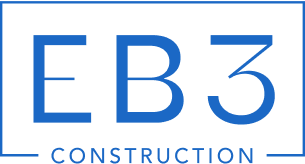Budget overruns derail more construction projects than any other single factor. When costs spiral beyond initial projections, owners face difficult choices about scope cuts, financing gaps, or project delays that ripple through schedules and partnerships.
Pre-construction estimating forecasts all costs required to complete a build before work begins. This risk management tool covers labor, materials, equipment, permits, and associated expenses while aligning scope, schedule, and budget early in the project lifecycle.
Which Estimate Types Are Used In Preconstruction And How Accurate Are They?

The accuracy of estimates tightens as design details emerge and data becomes more complete. We match the estimate type to the design stage, balancing practical needs with available information at each phase.
Conceptual Estimates During Early Planning
Conceptual estimates work when design completion sits between 0-10%. These rough calculations draw from historical data or unit benchmarks from similar projects. Accuracy typically ranges from ±30-50%.
We use these estimates for feasibility studies and initial budget discussions. The wide accuracy range reflects limited project definition, but it provides enough direction for go/no-go decisions. For example, a conceptual estimate might use cost per square foot from past office buildings to gauge a new commercial project.
Preliminary Estimates As Design Develops
Preliminary estimates apply when design reaches 10-40% completion. These estimates add early quantity takeoff work and system-level approximations. Accuracy improves to about ±20-30% as more project details become available.
We develop these estimates using schematic drawings and outline specifications. The approach includes rough measurements of major building systems like HVAC and structural components. This stage helps refine budgets and test design alternatives before committing to detailed engineering.
Detailed Estimates For Advanced Design
Detailed estimates require 50-100% design completion. These comprehensive calculations include full quantity takeoff, current labor rates, subcontractor quotes, cost escalation factors, and contractor markups. Accuracy tightens to ±5-15%.
We base these estimates on complete construction documents and vendor pricing. The process involves itemized breakdowns for materials, equipment, and labor. Detailed estimates form the foundation for contract negotiations and final project budgets.
Engineering Versus Contractor Perspectives
Engineers often produce high-level planning figures focused on technical requirements and system performance. These estimates help validate design concepts and support early project decisions.
Our contractor estimates incorporate field conditions, local material pricing, and constructability factors. We account for site access limitations, labor availability, and installation challenges that engineering estimates might not fully address. This practical approach reflects real-world construction costs more accurately.
What Goes Into An Accurate Pre-Construction Estimate?
Building a reliable pre-construction estimate requires assembling multiple cost components that reflect real-world conditions and market pricing. Each element serves as a building block that, when combined properly, creates a comprehensive financial framework for decision-making. We structure our estimates around six core elements that capture both direct construction costs and the business realities of executing complex builds.
Scope Clarity Forms The Foundation
Every accurate estimate begins with crystal-clear scope definition. We define performance requirements, construction phasing, and regulatory compliance from the outset to prevent costly assumptions later. This includes understanding how the building will function, what systems need redundancy, and which codes apply to the specific use case.
Phasing considerations become critical when working in occupied facilities or when delivery schedules drive construction sequencing. We document whether work occurs during normal hours, requires night shifts, or needs coordination around operational constraints that affect labor productivity and equipment access.
Quantity Takeoffs Drive Material Accuracy
Precise quantity takeoffs form the mathematical backbone of any estimate. We count and measure every component required for construction, from concrete volumes to linear feet of piping to square footage of finishes. Where CAD or BIM models are available, we leverage these digital tools to extract quantities more accurately and consistently than manual methods allow.
Modern takeoff processes integrate with design software to automatically calculate material quantities as plans evolve. This approach reduces human error and enables rapid updates when design changes occur during the pre-construction phase.
Unit Pricing Reflects Current Market Conditions
Each quantity gets paired with current, localized unit costs that account for today’s market conditions and realistic lead times. We source pricing from established suppliers and track material availability to avoid surprises during procurement. Regional variations in labor rates, material costs, and transportation expenses all factor into unit price development.
Lead times become especially important for specialized equipment or custom-fabricated items that could delay construction if not ordered early enough. We incorporate these timing considerations into both cost and schedule development.
Labor Rates And Productivity Account For Real Conditions
Labor cost calculations extend beyond base wage rates to include the full burden of employment costs, productivity factors, and site-specific conditions. We factor in local wage structures, benefits, and the coordination requirements between different trades working in shared spaces.
Access constraints, shift work, and workspace limitations all affect productivity rates that we apply to labor hour calculations. A crew installing ductwork in a tight ceiling space works differently than one with open access, and our estimates reflect these realities.
Overhead And Markup Cover Business Operations
Every estimate includes overhead costs that support project execution but don’t appear in direct material or labor line items. This covers project management, temporary facilities, insurance, and the administrative support required to deliver the work successfully.
Markup represents a reasonable profit margin tied to project risk and complexity. Higher-risk projects or those with tight schedules typically warrant higher markups to account for the additional management attention and potential for complications.
Contingencies Buffer Against The Unknown
We include contingencies ranging from 5 to 15 percent to address unknowns that emerge during construction. Authority Having Jurisdiction feedback, hidden existing conditions, and material price swings all represent risks that contingencies help manage. The percentage varies based on project complexity, design completeness, and site conditions.
Equipment rental costs, subcontract pricing, sales tax, and other non-measured items round out the estimate to capture the full cost picture. These elements often represent significant portions of total project cost and require careful attention during estimate development.
How Does The Pre-Construction Estimating Workflow Run From Kickoff To Schedule?

The preconstruction workflow follows a structured sequence that transforms project concepts into actionable plans. Each step builds on the previous one, creating documentation that supports informed decision-making throughout the design phase.
Team Leadership and Strategic Alignment
We assign a dedicated preconstruction manager to oversee the entire workflow. This person coordinates team assembly, manages stakeholder communication, and ensures alignment with owner goals from the project’s outset.
The preconstruction manager serves as the central point of contact, bringing together estimators, designers, and field personnel. They establish project priorities and maintain focus on feasibility constraints throughout the process.
Project Kickoff and Objective Setting
The kickoff meeting establishes the foundation for all subsequent work. We gather key stakeholders to confirm project objectives, address initial questions, and assess overall feasibility within the proposed parameters.
This meeting produces a clear understanding of performance requirements, budget parameters, and schedule expectations. We document any concerns or constraints that could affect the estimate’s accuracy or the project’s viability.
Site Assessment and Systems Evaluation
Field verification begins with comprehensive site checks that measure existing spaces and evaluate conditions. We assess electrical capacity, HVAC systems, and plumbing infrastructure to confirm compatibility with proposed improvements.
These assessments reveal access constraints, utility limitations, and coordination requirements that paper plans often miss. We document existing conditions that could affect installation methods, material requirements, or construction sequencing.
Digital Takeoffs and Preliminary Costing
We perform digital takeoffs using current drawings and specifications, extracting quantities for all major building components. This process generates a preliminary cost breakdown that separates materials, labor, and equipment requirements.
Digital tools improve accuracy compared to manual methods while allowing rapid adjustments as the design phase progresses. We compile this information into cost categories that align with construction phases and trade responsibilities.
Responsibility Matrix Development
The responsibility matrix clarifies who provides and installs each project component. This document prevents gaps in scope coverage and eliminates overlapping responsibilities that can lead to disputes or cost overruns.
We define whether items come from the owner, general contractor, or specific trades. The matrix also specifies installation responsibilities, coordination requirements, and interface points between different work scopes.
Initial Schedule Creation
We develop an initial schedule that shows major tasks, their durations, and logical sequencing. This schedule identifies critical path activities and establishes realistic completion timeframes based on current project understanding.
The schedule undergoes refinement as design decisions solidify and stakeholder input clarifies priorities. We account for procurement lead times, permit processes, and coordination requirements between trades.
This structured workflow delivers comprehensive project documentation before bidding begins. Owners receive clear visibility into scope definition, cost projections, and timing expectations, enabling informed decisions about project advancement or modifications.
What Pitfalls Should Teams Avoid, And How Do Sectors Change The Estimate?
Preconstruction estimating requires more than technical accuracy. It demands careful attention to process, coordination, and market realities. Common mistakes can derail even well-intentioned efforts, while sector-specific factors significantly influence both cost and complexity.
Common Estimating Pitfalls To Avoid
Vague or shifting scope creates the most damaging cost overruns. When project requirements lack definition or change frequently, estimates become guesswork rather than reliable forecasts. We see this pattern repeatedly: initial budgets based on incomplete information expand by 20-40% as actual needs emerge during construction.
Outdated cost data undermines estimate accuracy from the start. Using pricing from previous projects without accounting for current market conditions and material lead times leads to significant budget gaps. Industrial construction costs rose 38% from pre-pandemic to peak levels, yet many estimates still relied on historical benchmarks that no longer reflected reality.
Access constraints and phasing requirements in active facilities represent hidden cost multipliers. Working around ongoing operations often requires premium scheduling, specialized equipment, and additional safety measures. These factors can increase labor productivity losses by 15-25% compared to greenfield construction, yet they frequently receive inadequate consideration in initial estimates.
Escalation and long-lead equipment present growing challenges. Material price volatility affects core construction components differently across sectors. Steel and concrete prices fluctuate independently, while specialized equipment like HVAC systems now require extended lead times that compress construction schedules and increase coordination costs.
Misaligned expectations between estimators, designers, and field teams create costly disconnects. When preconstruction estimates don’t account for constructability challenges or local installation practices, field costs invariably exceed projections. Regular coordination between these groups prevents assumptions that don’t match jobsite realities.
Sector-Specific Considerations That Drive Costs
Healthcare construction demands redundancy systems, continuous operations, and stringent compliance requirements. ASHRAE standards for air quality and ventilation create complex mechanical systems with higher installation and commissioning costs. Infection control protocols require specialized materials and construction sequencing that can extend schedules by 10-15%. We account for these factors through increased contingencies and longer phasing periods.
Industrial projects involve uninterrupted production requirements and custom fabrication needs. High-pressure systems, specialized process equipment, and OSHA compliance for hazardous environments affect both methods and safety contingencies. Industrial facilities often require unique structural solutions and utility capacities that don’t follow standard pricing models. Process downtime costs can reach thousands per hour, making schedule reliability critical.
Commercial construction focuses heavily on energy performance targets, building certifications, and compressed delivery timelines. LEED and similar certification programs require specific materials, testing protocols, and documentation that add both cost and coordination complexity. Tight construction schedules in urban environments create premium labor conditions and logistical challenges that affect base pricing assumptions.
These sector differences influence not just material selection and installation methods, but also risk allocation, contingency planning, and schedule development. Understanding these distinctions early in preconstruction helps establish realistic budgets and prevents costly surprises during construction.
Conclusion and Practical Next Steps

Pre-construction estimating forms the foundation of every successful construction project. We establish the cost, risk, and schedule baseline before ground is broken. From conceptual estimates in early design to detailed breakdowns before construction, this process serves as our primary risk management tool and decision-making guide.
The fundamentals remain consistent across every project we tackle. We match the estimate type to the current design stage, ensuring accuracy improves as more information becomes available. Scope clarity drives everything—we define performance requirements, phasing constraints, and regulatory needs upfront. Rigorous takeoffs provide the quantitative backbone, while realistic assessments of labor productivity, overhead, markup, and contingencies protect both budget and schedule.
For developers and property owners ready to move forward, we recommend these practical steps. Begin with a preconstruction kickoff meeting to align objectives and establish clear communication channels. Document responsibility matrices early to prevent scope gaps and coordination issues. Publish an initial schedule that reflects both design milestones and construction durations. For complex facilities or occupied buildings requiring specialized coordination, engage your construction team during the design phase to validate constructability and confirm current market pricing. These steps reduce costly surprises and maintain project momentum from planning through completion.
Contact EB3 Construction to discuss how our preconstruction team can support your next project with comprehensive estimating and planning services.




